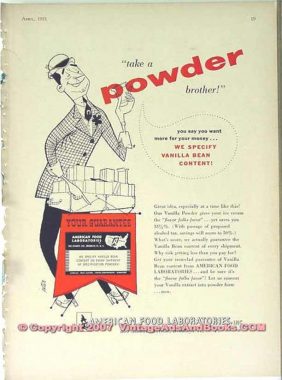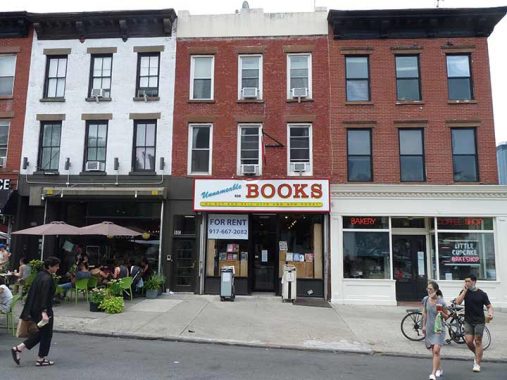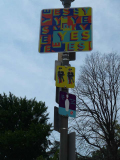
BEEN a few years since I walked Vanderbilt Avenue, so I decided to do a section of it on a walk in August 2021 that took me from Fulton Street in Fort Greene, meandering south on Vanderbilt, through Grand Army Plaza, into Park Slope and winding up at Barclays Center; today I’ll touch on the Vanderbilt Avenue and Prospect Heights legs.
There are two streets named Vanderbilt in Brooklyn, Vanderbilt Avenue in Clinton Hill and Prospect Heights and Vanderbilt Street in Windsor Terrace. that one is actually named for 19th Century politician and jurist John Vanderbilt, a member of a family that arrived from Holland in the 1650s, with the family named meaning “near the town of Bilt” in Utrecht, another Netherlands place name that also wound up in Kings County.
Vanderbilt Avenue is named for the most famed Vanderbilt of them all, “Commodore” Cornelius Vanderbilt, who initiated the first ferry service from Staten Island to Manhattan and later controlled multiple steamship lines and railroads. The Vanderbilt family owns a large plot in Moravian Cemetery in Staten Island; William K. Vanderbilt constructed Long Island’s first auto throughway; and he is the great-great-great grandfather of TV newsman Anderson Cooper. The Clinton Hill Landmarks Designation report names John Vanderbilt as the avenue’s namesake, but I take issue with it because it is paralleled by Clermont Avenue, the name of Robert Fulton’s famed steamship, and Clinton Avenue: the street was likely named for DeWitt Clinton’s involvement in the construction of the Erie Canal, as men who had a hand in NYC’s waterborne growth, and the instruments of that growth, are honored in this region.

Atlantic Avenue, looking west from Vanderbilt Avenue. This road and I have a history. As a kid my parents would amuse me on the weekends as one parent or the other would take bus rides with me on all the local routes, the B16 (Fort Hamilton Parkway), B63 (5th Avenue and Atlantic Avenue); B37 (3rd Avenue and Fulton Street), B64 (86th Street to Coney Island) and less often the B35 (Church Avenue), B4 (Bay Ridge Parkway) and B1 (Bay Ridge Avenue/13th Avenue/86th Street).
The B63 ran, then as now, down Atlantic Avenue from 5th Avenue west to the waterfront but didn’t hit this section of the road. I didn’t familiarize myself with this stretch until I was in high school at Cathedral Prep from 1971-1975 (I now freely admit my age; what’s the point in skirting around it now, anyway, with a snowy white beard?) and I would take the B63 to Atlantic and transfer for the B45, which ran along Atlantic and turned south at Washington. Why was I at Cathedral Prep, whose mission was to educate potential priests? I had no intention to enter the ministry, but the reason was simple. I had good grade school marks and the school offered me a scholarship. Never look a gift horse in the mouth! Cathedral Prep was, and is, a beautiful Flemish Gothic building that resembles a medieval castle. It had ever smaller graduation classes and closed in 1985, since converted to residences. Had I had the cash 20 years ago I may have purchased an apartment there myself as it would have been a hoot to live in one of my old classrooms.
I won’t get into it at length here, but few areas of Brooklyn have changed as much as Atlantic Avenue just east of Flatbush Avenue. Today it is dominated by the Atlantic Terminal shopping area and by Barclays Center. When I went to school in the area, Atlantic Avenue featured meat wholesalers and slaughterhouses. If I walked from Washington Avenue back to Flatbush, I would sometimes have to dodge meat carcasses dangling on hooks. It was Brooklyn’s own Meatpacking District.



Professional football had its AFL from 1961-1970, when the New York Jets won their only Super Bowl when they weren’t even part of the senior-circuit National Football League. But Brooklyn had the AFL long before it was known as a football league, with another AFL… American Food Laboratories… at #860 Atlantic Avenue where it faces Clinton Avenue.
What kind of food was concocted in the American Food Laboratories? Ice cream flavoring. Since this was the 1940s and 1950s when only vanilla, chocolate and strawberry were the most-consumed ice cream flavors, that’s what was offered to ice cream makers by the AFL. Above are a couple of magazine ads that would make a Saul Bass or Milton Glaser proud.
Oddly I had never seen this painted sign during the years 1971-1975 when it must have been less faded. However: during those years the neighborhood was rather sketchier than it is now, and at lunch I stayed in the school building with no thought of exploring the surrounding area. As a matter of fact when I later attended college and worked in Brooklyn Heights between 1975 and 1981 I really didn’t explore the area that much either. In those years most of my inhalation of NYC’s infrastructural environment came from glimpses I got when bicycling Brooklyn and Queens in the 1970s, 1980s and 1990s before moving to Flushing. It was then, in 1998, that the whole idea coalesced.

There is no better example of what Clinton Hill is changing into (thankfully much of it is protected by landmarking) than the twisting residential luxury tower called The Axel at #550 Clinton Avenue, also fronting on Vanderbilt. It was completed in 2022 and replaced a car wash and auto body shop at Atlantic and Vanderbilt.
Smokey Vale is a combination haberdashery, art gallery and barbershop founded by Jamaica native Paul Howlett at #575 Vanderbilt. I consider it an unusual combination but the hybrid barbershop idea has been done before at Freeman’s Sporting Club near the Bowery, which offers Dewar’s whisky with a trim.
The Smokey Vale sidewalk sign uses the Highway Gothic font used on road signs, though not in all caps anymore as they had been.

An unnamed (by signage anyway) at the SE corner of Vanderbilt and Dean Street shows the traditional goods stacked high in the windows, as well as a pair of ancient ice machines. Not all of Prospect Heights has been gentrified yet, it seems.
I was completely unaware of it but auto traffic was removed from Vanderbilt Avenue has been removed from the street for several hours each weekend. This part of Brooklyn is still several blocks away from Prospect Park. I think “pedestrianizing” and “bicyclizing” parts of auto routes have their part time place in parts of the city that are “underserved” (to use the word of the decade) by parks, but not full-time, as has been done on 34th Avenue in Jackson Heights.
Both these adjoining storefronts can be found on the east side of Vanderbilt between Bergen Street and St. Mark’s Avenue. The paint has chipped off a sign, revealing a 1940s-era sign for a grocery at #617, while Mitchell’s Restaurant at #617A boasts a handpainted sign.

Soda, at #629 Vanderbilt, is actually a bar/restaurant before its closure in 2021. It was in the former location of Boese’s ice cream shop in the 1940s and the neon sign may be left over from that era.

What attracted me to Vanderbilt Avenue was the variety of sidewalk signage; the closed Unnameable Bookstore at #600 employs the Clarendon Bold font…

…while Happy Cleaners, #649 and adjoining the apartment building called “The Vanderbilt” uses Cooper Black, a very old font invented by king of type Frederic Goudy.

Acme Pet Food at #628, with its green and gold sign featuring raised lettering, must be where Wile E. Coyote gets the bird seed with which he hopes to trap the Road Runner.

As we get near the park, historic structures abound. 249 Sterling Place (at Vanderbilt) is an historic landmark completed between 1867-1869 with an 1887 addition. When originally constructed, the building served as Public School Number 9: it is now PS 340.

The PS 9 Annex, 251-279 Sterling Place, was completed in 1895 by architect James Naughton, as the population had outgrown PS 9 across the street. It was designated a NYC Landmark in 1987 and had been rehabilitated as artists’ housing by 1990 and more expensive condominiums today.
At this point I decided to go a block east to Underhill Avenue to check out a couple of things…

The Duryea Presbyterian Church, #185 Underhill Avenue at Sterling Place.
This Romanesque Revival style church was designed by architects W.O. Weaver & Son and built in c.1905 as the Duryea Presbyterian Church at a time when the Prospect Heights neighborhood had become the residential center of its congregation. Founded earlier in the nineteenth century as the Duryea Presbyterian Mission, an offshoot of the Classon Avenue Presbyterian Church, the Duryea Presbyterian Church was founded in early 1887 by the Reverend Samuel P. Halsey. Landmarks Preservation Report]

There is a short commercial strip on Underhill Avenue where I found this vintage lettered automat sign across the street from the church at #180.

I have an affection for Prospect Heights; unfortunately it dimmed a bit since my favorite rest stop, Berg’n, ran by my old boss at Brownstoner, Jonathan Butler, was a pandemic casualty. But there are survivors.
I pressed further east to Sterling Place at Washington Avenue, where another vintage sign awaited, at Tom’s Restaurant. This is not the Tom’s immortalized in the Seinfeld show, or by Suzanne Vega in “Tom’s Diner” (that one is at Broadway and West 112th Street) but it has a history in its own right as it has been family-operated since 1936.
Tom’s Restaurant, an old-school diner out in Prospect Heights…has been successfully harnessing the power of the free sample since 1936. Open just for breakfast and lunch, Tom’s sweet spot is the weekends, when the restaurant’s standard customer lines up outside on Sunday morning, hungover and desperate to get a meal down in order to have something to throw up a few hours later while watching the Jets. That is pretty much the worst type of person imaginable (and is also me, weekly), and Tom’s neutralizes this threat in the only logical way – by giving the people free sh*t. The staff preemptively works the line of patrons with platters of sausage, ham, fruit, cookies, pitchers of water, and cups coffee for all. For free. Take one or take six, because nobody but the person behind you in line is counting or cares. [The Infatuation]

Another interesting sign, Mayday Hardware, #755 Washington Avenue between Sterling and St. John’s Place.

While staggering around Prospect Heights in the 80-degree dead dog heat in August 2017, I chanced upon a bar called Tooker Alley at the patriotic intersection of Washington Avenue and Lincoln Place. I decided to look into the name, thinking it had something to do with England. The answer lies not east but west.
The bar’s name was inspired by the Dill Pickle Club, a Bohemian-style speakeasy and later legit bar, in Chicago between 1917 and 1935, founded by Jack Jones (no relation to the “Love Boat” theme singer), a member of, and organizer in, the Industrial Workers of the World, a left-leaning trade union of the early 20th Century. in addition to its purpose as a watering hole the Dill Pickle was host to one-act plays, poetry readings, jazz dances and opera. “Free thinkers’ of the Midwest such as Clarence Darrow, Sherwood Anderson, and Carl Sandburg were patrons, but the club attracted all comers regardless of social standing, notoriety or wealth. Unfortunately in its later years, ironically after the repeal of Prohibition, it became a mob hangout and closed in the mid-1930s.

I brought a tour group into Lincoln Station, Lincoln Place just east of Washington, after a Grand Army Plaza tour a few years ago, and liked the chicken sandwich so much, I return when I’m in the area and today I just checked to see if it’s still there. No Diet Coke is offered (I don’t drink beer when I am stalking around, I’m a professional), so I settle for water or San Pellegrino soda.

I arrived at the Brooklyn Museum where, on the front lawn was this “YO” installation by pop artist Deborah Kass. It has also turned up on the Williamsburg waterfont in one of the parks there. If you approach it from the back, it says, “oy.”
Outside the Eastern Parkway subway entrance serving #2 and 3 trains the lampposts bear a number of cryptic signs installed by the Museum. However they seem inscrutable to me and I have never figured out what point they are making. Anyone want to offer a guess?
As always, “comment…as you see fit.” I earn a small payment when you click on any ad on the site.
1/29/23





8 comments
Vanderbilt Avenue divides Fort Greene and Clinton Hill.
Google shows the store with the old ice machines as Stop 2 Organic Deli, so the ‘hood might be fancier than one would think.You don’t find organic establishments in poor areas.
Though I must say that all the vacant businesses remind me of a Louis Rossmann video.
The Brooklyn Museum-Eastern Parkway station, in addition to the 2 and 3 lines, hosts the 4 from about midnight to 5am.
Vanderbilt family is still active in NYC. They own most of Western Staten Island and one of the largest Concrete Ready Mix plants on the Island Van-Bro.
About that sign (here’s my interpretation): Users, abusers, & confusers are pathological. Producers benefit civilization & are therefore preferable.
Vanderbilt Avenue does indeed appear to be named for Cornelius Vanderbilt, with Clinton and Clermont part of a “mini-cluster” of navigation-themed streets, each of which intersects Fulton Street, also navigation-themed.
Here’s what I was able to find on Vanderbilt Street. Windsor Terrace “was originally the farm of John Vanderbilt, divided at his death between his two sons, John and Jeremiah. The dividing line of these two farms, which were purchased by Robert Bell, is Vanderbilt Street.” (“History of Kings County and the City of Brooklyn”, 1884, Henry R. Stiles, AM, MD, Editor: History of the Town of Flatbush, Rev. R. G. Strong, AM) I’m not sure whether this is the same John Vanderbilt referred to by Benardo and Weiss in “Brooklyn by Name”; the Dutch (like the Irish) had a custom of “recycling” the same names exponentially from generation to generation, so there were likely a multitude of John Vanderbilts in Kings County.
Underhill Avenue appears to be named for James E. Underhill, an Alderman of the Sixth Ward at the 1839 adoption of the Commissioners’ Map of the City of Brooklyn, and through whose land in the Ninth Ward the street was laid out.
I lived off Classon and Eastern parkway right down the block from Lincoln station for around 10 years. I’ve moved to NC over 2 years ago, visiting family once a year in NY I haven’t had a chance to come back to see my old hood so I was quite happy to see this post. Was sad to hear about Bergn, my father also knew the owner and did some work there, wife and I had our baby shower prior to moving to Greenwood. I had hoped to go back during one of my NY trips but sadly that won’t happen.
Unless my memory is faulty, PS 9 once had a swimming pool in the basement (and perhaps still does). As a kid during the early 60s, I was a member of the “swim team” at St. Brendan’s Elementary School in Midwood — a school that didn’t even have a gym, let alone a pool. So every Saturday, we’d pile onto a yellow bus and drive to a gloomy, Victorian-looking public school — which I remember as PS 9 — where I’d practice the art of nearly drowning. (I still barely know how to swim)